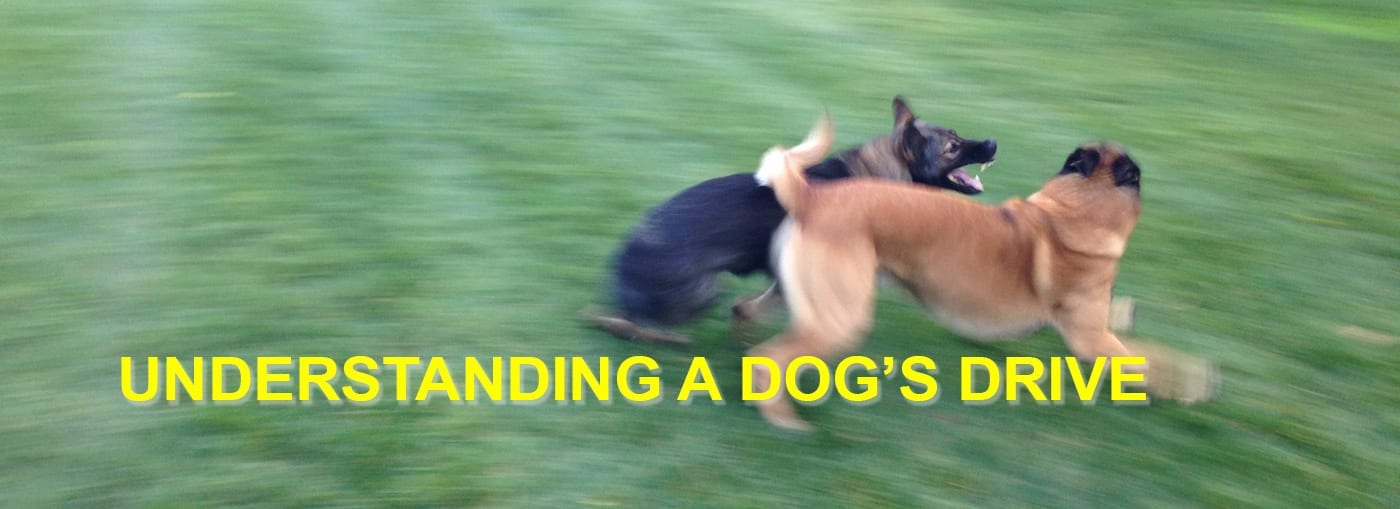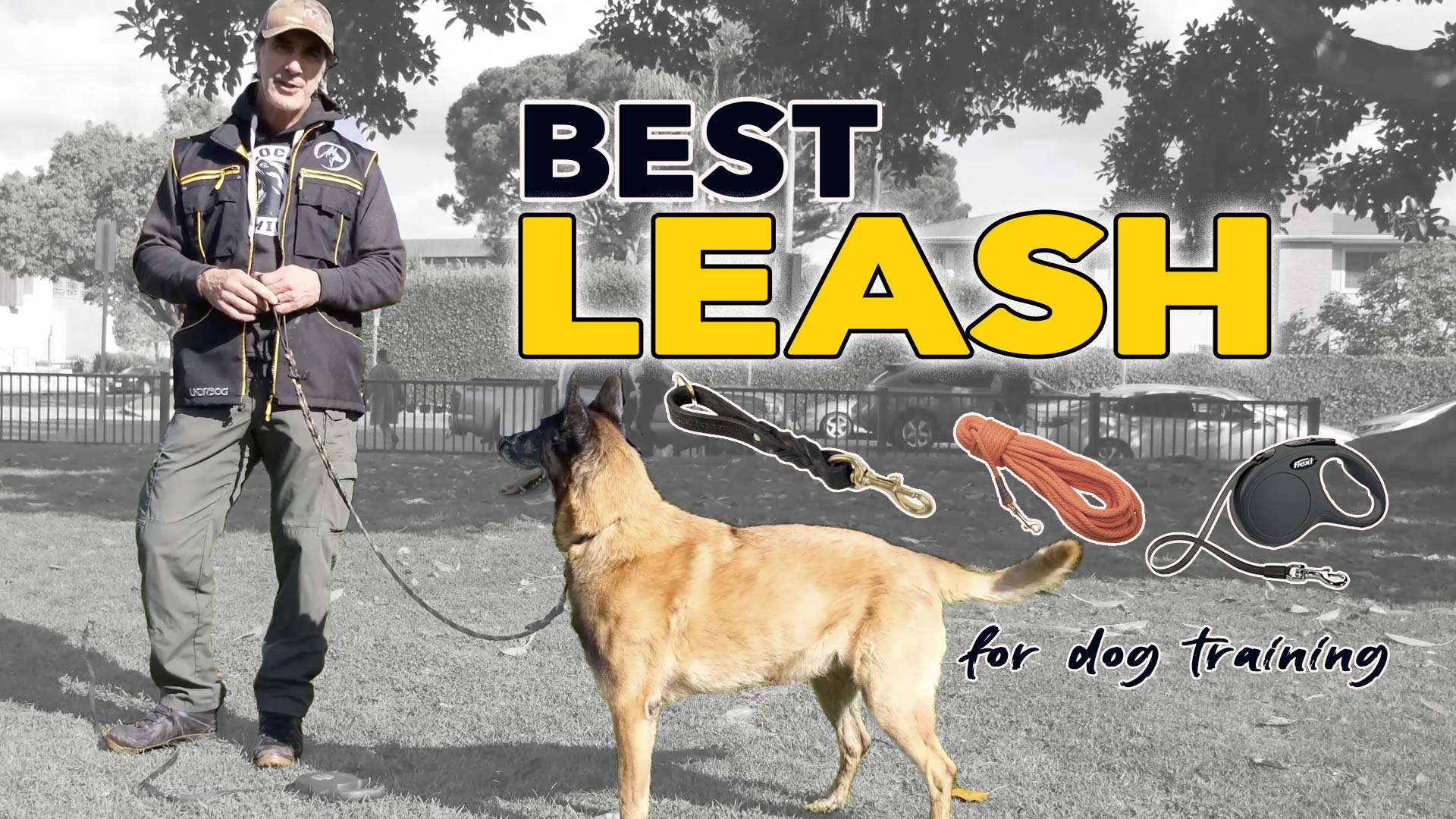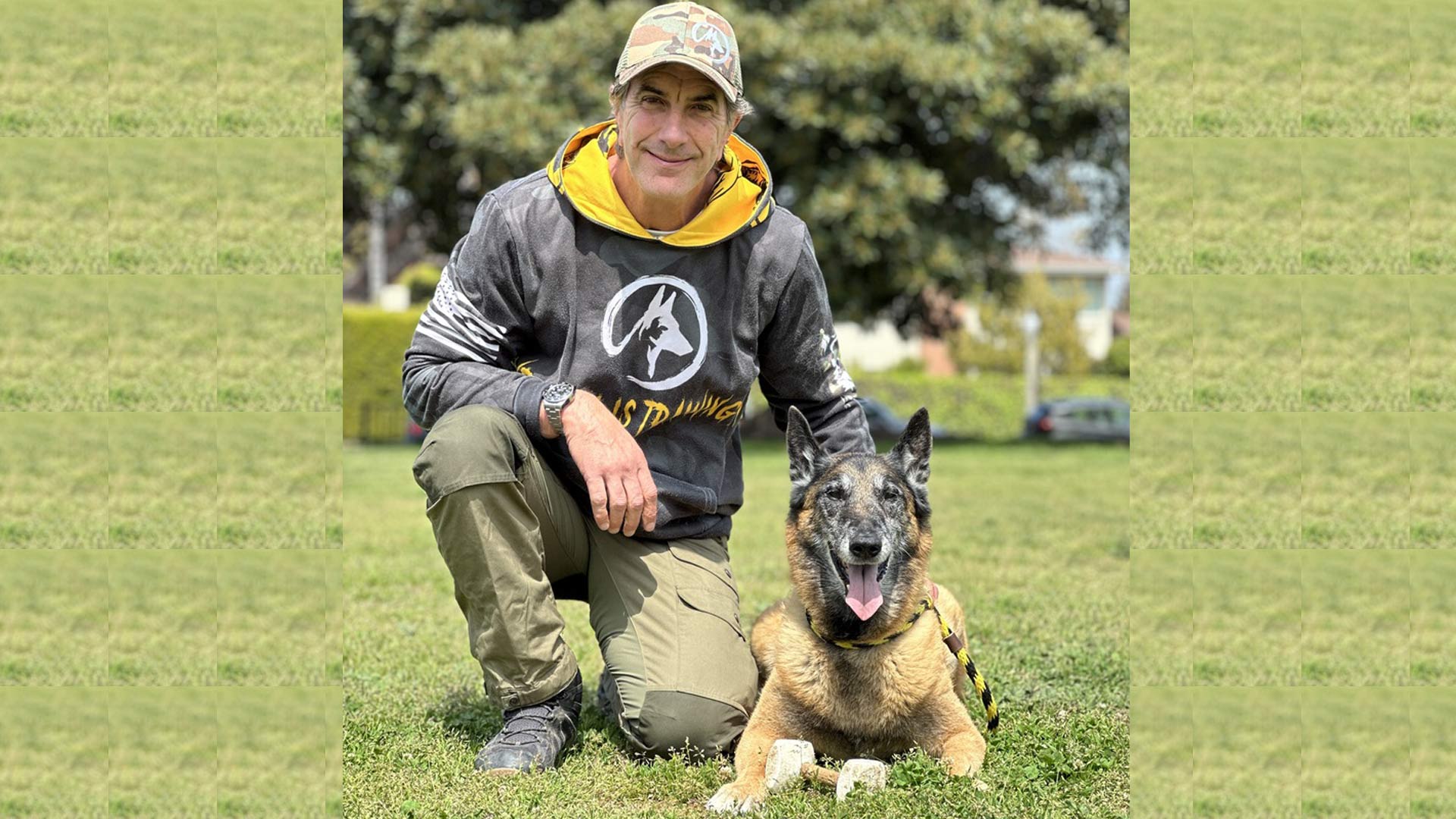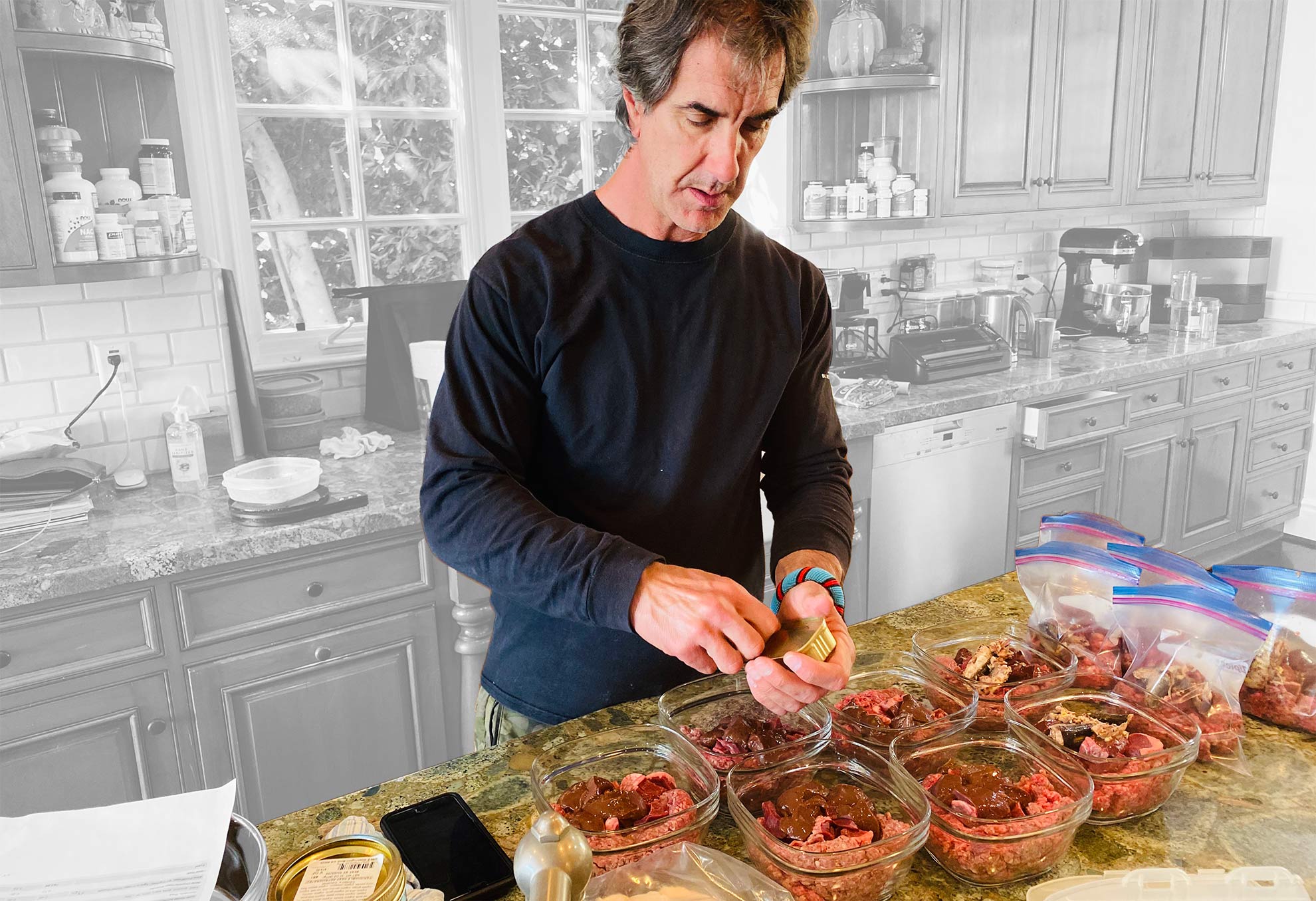Drives of Dogs
Drives are the unconscious, biological impulses that carry out important vital functions. They display in a physical manifestation of the dog’s personality and energy. How a dog sees and reacts to things, such as food, physical presence of other people or dogs, things that move, etc. all fall under the “drive” category.
Although often inherent, these drives can be compounded by environment with good or bad handling techniques.
See: online dog training
It is important to recognize drive traits in order to control and develop, or inhibit the manifestations of dangerous or undesirable ones. You cannot properly train or understand a dog without understanding the drives that make him a dog. Without the drives, the dog is merely a stuffed animal that barks and moves.
For those who want to label all dogs as dogs and not see dogs as multi-faceted in their various groups and breeds, I issue a warning. Although all dogs share most of their DNA with wolves as well as with each of the various breeds, the characteristics of drives throughout the various breeds can make their personalities (inside) as different as their looks (outside) very distinguished.
Different breeds of dogs have different triggers, drives and temperaments. Different drives may also run within a specific breed, i.e. you may find a high drive dog within a breed that is generally known for low drive dogs and visa vis.
For the most part, a specific range of drives can be classified within the specific groups of dogs. We can assume most dogs of the working dog group have a similar drive for work, tenacity, temperament; herding breeds would share a set of characteristics and drives, etc. There’s always the odd man out, but we want to focus on defining drives as they appear in each dog, breed and group.
Drives, in their rudimentary form, can be categorized into two groups:
Self Preservation and Preservation of the Species
Drives include a variety of further classifications including defense, hunting, pack, rank, sex, aggression, fight, flight and more. Understanding the complexities of drives is the most important aspect of canine behavior. It is the how, why and what dogs do in particular situations. I will try explain these drives in this article, but encourage you to continue your search as drives is something that can take a lifetime to understand. There is no article or course that can ever include every aspect / nuance of all of a dog’s drives. It is learned through experience and observation.
Part 1: SELF PRESERVATION
To start with let’s begin with the innate drive, which is Self Preservation. This is the drive to protect oneself and protect oneself from harm. It is inherently different from protecting the species. An example of this would be if a dog feels endangered “he” could run away and protect himself. This is “self preservation.” If he were acting to preserve or protect the species, running away would defeat the purpose.
So in self-preservation running is an option, yet not in preservation of the species.
Self Preservation can be divided into two basic groups (which will then be further subdivided). These two groups are Hunting Drive and Defense Drive.
#1 Hunting Drive aka Prey Drive is extremely common in all dogs, including our pet dogs and is most often seen in a dog’s desire to play. Hunting Drive relies on the dog’s “Prey Drive.” Prey Drive is the dog’s desire to scent (find), chase, kill and eat. As you can clearly see, without hunting drive a dog in the wild would never exist and therefore this is a fundamental drive. Although we feed our dogs and they don’t need to hunt, that drive is still a hardwired instinct that the dog will not “unlearn.”
In its fundamental form, prey drive is manifested in our domestic dogs as Play Drive: you throw a ball, the dog chases the ball, and the dog plays with the ball. The dog’s Prey Drive is fulfilled in playing ball with his owner because it doesn’t need to chase and kill its food. This ultimate reward (food) is delivered via a food bowl once or twice a day from the owner. The “chase game” is the fundamental aspect of a dog’s Prey Drive in practice.
Dogs chase each other in play mode, it is a game that most wild animals play to keep strong and sharp. It is important to remember that the playing aspect of the Prey Drive will allow us to see that excessive chasing / playing triggers the higher levels of prey drive which may lead to the manifestation of dominance. This dominance is most often brought about through frustration. If dominance is not triggered, the dog can just stay in “play mode” for the entire play session.
If a dog becomes frustrated in chasing or rough play with another dog, a more predatory mode may arise and the prey can turn to frustration & dominance and then a fight might arise. Furthermore, the dog being chased (if he feels threatened) can switch to a Defense Drive and start a fight as well. This is a complicated series of events, but because it is so hardwired into the dog, we should be aware of the components that may create potential problems.
Play/ Prey Drives are best kept in check, in particular when dogs first begin play with unknown dogs (as well as later). This will help keep them from triggering into undesirable drives or manifestations of drives that can prove dangerous.
Hunting, tracking, air scenting, pursuit (chase drives), retrieve (play drive) all fall into this category and can switch between active (pursuing) behaviors or passive (fleeing or submissive) and playful behaviors.
Although a similar game as ball chasing, playing tug with a dog harnesses their hunting drive and defensive drives. They willingly engage in the game, yet if they win at the right time the game stays in prey / play mode, if the dog has to put up more of a fight to get the tug toy, his Defense Drive is pulled into play. Dogs benefit from learning the proper use of their defensive drives and this can oftentimes give a weak dog the confidence he needs to be well balanced, but done improperly the defense can be brought to an unnecessarily elevated level and bring about dominance or crush a dog’s spirit.
*** I do NOT believe that playing tug in a well-balanced fashion has any bearing on making a dog aggressive or making a dog bite. This is a fallacy that has been brought about by un-knowledgeable trainers. However, improper play that builds frustration can have a negative impact on a dogs mental state and may cause frustration.
#2 Defensive Drives High Defense Drives are less commonly seen in pet dogs because of selective breeding. As more and more dogs are used as pets, defensive drives are less useful and are often bred out of dogs that will be pets. However working dogs, herding dogs, protection dogs and such are still bred with higher defensive drives. High defense dogs are not great candidates for pets but sometimes slip through the cracks, as well some dogs develop these behaviors through bad rearing, training or socializing.
Defensive Drives can be categories into two categories:
Aggression or Submission.
A dog can “defend” itself by biting the person that they perceive to do them harm or by rolling on their backs when they sense pressure. Either of these behaviors will protect itself (keep it from being killed).
*** Higher defense dogs are less likely to back down from a fight,
Lower defense dogs are more likely to back down from a fight.
Submission – We might look at the dog rolling over on his back as cute and playful (which it is), yet he has simply figured out a way to keep you from hurting or killing him. This might sound strange, but it is the dog’s instinct that dictates this behavior. This is also why rolling dogs onto their backs as some trainers do– (forcing them onto their backs) is in NO WAY making a dog submissive or submit, it is merely forcing him to falsely take a position that he is not willing to offer on his own. One reason people often get bit when forcing a dog into this position is because the dog is not offering this behavior, so forcing him to “fake” it doesn’t mean he feels it, it just means he has to pretend… kind of like being forced to tell someone you love them if you don’t, if you don’t feel it, it’s not there.
*** Forcing a dog that is aggressive in defense onto his back may cause them to strike out causing an unnecessary bite.
If a dog gives up his belly (on his own accord) he is defending himself through submission. Giving up is a way of defending yourself. Remember the key to these drives is self-preservation. If a person is holding a gun to your head and your give up, you defended yourself better than the person who did something stupid and got shot dead!
Dogs and wolves never FORCE one another onto their backs, the surrendering dog rolls onto his back in an effort to give up and save his life. This would be akin to finding someone and forcing their hands over their head and saying they gave up. No, you just put their hands up over their head.
Unless one gives up on their own accord, they are not giving up.
Submission Drive can further be broken down into these three additional classifications:
Subordinate – get along and tow the line
Flee – leave and go away
Avoidance – stay but don’t further interact
Submissive dogs, unlike aggressive dogs (see below) are likely to act on pressure through subordination, fleeing or avoidance / fleeing.
Aggression – Although more uncommon in well bred and well reared dogs, aggression is the other side of the defense (self preservation) drive and may still be present in some dogs. This dog will not roll onto his back, but will rather dominate or fight back against the other dog or person. He will fight to his death before giving up.
Aggression is not always a bad thing. Used properly this drive can be part of a well-balanced dog since even a fearful or submissive dog will bite at some point. A dog with a balanced aggression can be useful in protection work, hunting and sports since these dogs have a strong confidence needed for accomplishing tasks that require this type of drive.
Dogs with high Defense have a stronger likelihood for aggression when challenged.
Dogs with lower Defense have a stronger likelihood for submission when challenged.
Aggression is exemplified in Dominance and Fight Drives. These drives will produce a behavior that manifests in attacking whether out of dominance, fear or feral tendencies rather than giving up. A dog with a weaker constitution or fear issues is more likely to bite than one with strong nerves, in particular when the option to flee is removed). Confident dogs are more balanced and stronger in temperament, they are less likely to bite, since their confidence keeps them from feeling challenged by normal goings on.
Part 2: PRESERVE THE SPECIES
People may think that self-preservation and preservation of the species is one in the same, but that would be incorrect. As stated above, dogs (as well as other animals) will often act selflessly in order to preserve the species where they may not act the same in order to preserve themselves. Think of the protective nature of a mother who will fight to her own death in order to protect her children, this is the “Preserve the Species” drive. A dog may lose his own life in order to preserve the species.
The primal drive of procreation is strong in all creatures and it raises a particularly strong drive in animals that are able to use their strength to defend this drive. Dogs will even attack their own owners and people they otherwise love if this drive is challenged.
Preservation of the Species can be broken down into two basic groups:
Pack Drive and Sex Drive
#1 Pack Drive has one primary category and that is RANK. Where a dog falls on the rank ladder is where his position falls in the pack. For the most part with dogs, there is an alpha and there may be a dog or two that jockey for that position occasionally, but it is generally a structure that is established and not often challenged. Therefore, there is an alpha and the rest are pack members. Until there is a need to re-establish the alpha, the pack moves about as normal.
Dogs are happy being “pack members” and often don’t want to be the alpha because the alpha requires more responsibility and decision-making. Dogs are happy to go along with the flow in a happy, well-balanced pack. Pack Drive is one we can use to condition our dogs to go along with our way. When dogs fall in line and understand the benefits of pack drive, it is their happiest (and safest) place. Think of the dogs you see walking happily with their owners, sitting at the foot of the chair while the owner reads or talks to a friend, these dogs are in Pack Drive. Pack Drive accounts for the least stress on the dog because he’s not being asked to hunt, protect, play or anything, he’s simply allowed to “be.” If you want a happy dog, it will be a dog that is balanced in his pack drive with his owner / person.
There are times we ask a dog to switch between pack drive and prey drive such as when we walk along and then throw a stick. The dog goes from the “walking along” / pack drive to “chasing the stick” / prey drive. If the dog is constantly in an excited state; jumping up to get the human to throw the stick, barking, running around, etc. he’s not settling back into pack drive, he is staying in prey drive.
Getting a dog to settle into or switch to pack drive is primary for a happy relationship between dogs and people. We both must strive to find that balance and teach the dog that he doesn’t always have to “be on.”
#2 Sex Drive is the primary drive that “preserves the species.” Without sex the species dies. A male dog’s sex drive can bring about dominance and aggression through his instinctual desire to mate with a female in heat. The primal drive to be the one to mate can lead to life and death battles with other dogs as well as serious injury and death to humans. In fact several human fatalities in dog bites have been attributed to interfering in a dog’s sex drives.
Female dogs also exhibit a sex drive and will entice a male to mate with her and discourage other (less desirable) dogs not to mate with her. Therefore a female – male fight is also common during sex drive. Generally the alpha dog will be most likely to claim the “in season” female for his own and when this is challenged there can be big problems. Because of the elevated drives dogs may fight to the death when sex drive comes into play. Since sex drive is a component of the “Preservation of the Species” it is a more powerful drive than even self preservation, because through instinct most animals are more likely to act to preserve the species than to preserve ones-self.
When a female is in heat it is best to keep them away from males and more importantly to be extremely cautious when interfering between their interactions. A male will be able to scent an in-season female from miles away. He will whine and howl to alert her. Many top-level competitive obedience trainers will train their dogs to be neutral when a dog is in season, others won’t even bring their dogs out. This is the biggest challenge on the distraction scale that exists to a male dog.
The drive of each dog is as different as his or her individual personality. Every dog has components of the drives discussed above, whether or not they are ever brought to the surface is another story, but they are there. The exception may be that neutered males and females (if neutered early) may not exhibit the intense sex drives of intact dogs, yet the preservation of the species drive is still there.
Understanding, or at least attempting to understand, the components of a dog’s drives, gives you a glimpse at understanding the fascinating complexities that make dogs tick.
© 2017 Robert Cabral – not to be reprinted without the express written consent of the author






